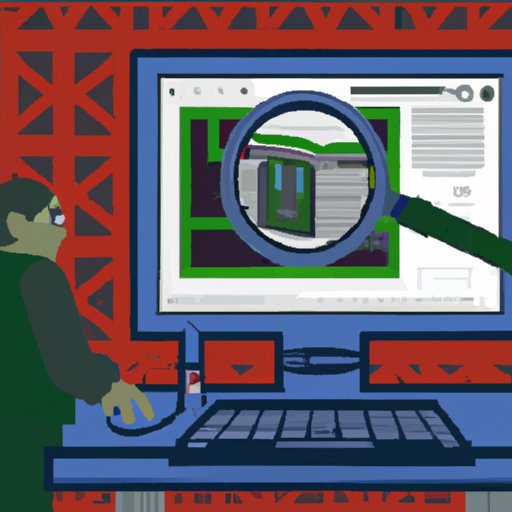Introduction
Have you ever wondered how people with vision impairments access digital content? One of the most important tools at their disposal is a screen reader. Screen readers are software applications that read out loud the content on a computer screen, making it accessible for those with visual impairments. In this article, we will explore what screen readers are, how they work, and their role in digital inclusivity.
A Beginner’s Guide to Screen Readers: Everything You Need to Know
A screen reader is a software application that reads out loud the content on a computer screen. It converts text or images into speech or Braille output for users with visual impairments. Screen readers operate by sending commands through the computer’s operating system to identify the text or image, recognize its characteristics, and then voice it aloud to the user.
There are several types of screen readers available, including free and commercial software. While some are built into certain operating systems, others require installation to work. Popular screen reader software includes JAWS, NVDA, and VoiceOver.
The benefits of using a screen reader are numerous. For those with visual impairments, it provides equal access to otherwise inaccessible digital content. Additionally, it enhances productivity by allowing users to multitask effectively while listening to content.
The Essential Guide to Understanding How Screen Readers Work
Screen readers work by interpreting on-screen content and transforming it into speech or Braille output that users can hear or feel. The screen reader software sends commands through the operating system that parse the elements of a webpage, app, or document. This includes recognizing the text structure, headers, links, and buttons.
Each screen reader has its unique way of converting text to speech. They use different speech synthesizers that can alter the voice and tone of the content. Users can also customize the screen reader’s voice, rate of speech, and other features to match their preferences.
Screen readers make it easier for users to navigate digital content through several features. They use keyboard shortcuts or gesture commands to browse web pages, navigate forms, and access menus. They also provide audio feedback when users interact with an element, such as when a mouse is moved over a link or when a button is clicked.
Breaking Down Accessibility: The Role of Screen Readers in Digital Inclusion
Ensuring accessibility on digital platforms for people with disabilities is a critical requirement for digital inclusion. There are accessibility laws and guidelines in place to ensure that all digital content is easy to access and navigate. Failure to comply with these regulations can result in hefty fines and legal action.
Screen readers play a crucial role in making digital content accessible to people with visual impairments. They provide an alternative to visual information that may not be accessible to these users. By reading out the content aloud, they enhance inclusivity, and enable users to participate in online activities.
Assistive technology and accessible design practices are also essential elements of digital accessibility. Designers must consider accessibility from the outset of web development, taking into account elements such as proper structure, alt text, and high contrast color schemes.
Screen Readers: The Tool Everyone Needs to Access Digital Content
While screen readers are essential tools for people with visual impairments, they can benefit anyone who wishes to multitask effectively while using a computer. They can improve productivity by enabling users to listen to the content while doing other things with the computer.
Screen readers can also come in handy in situations where visual content is not accessible, such as in noisy environments where users cannot hear the sound, or when using a device with a small screen. They are also useful for non-native English speakers who may benefit from hearing the content spoken aloud while reading it.
How Screen Readers are Transforming the Lives of People with Visual Impairments
Screen readers are transforming the lives of people with visual impairments in many ways. They provide access to education, employment, and entertainment. They also make it possible for these users to browse the internet, shop online, and access social media platforms.
Real-life stories of people whose lives have been impacted by screen readers are numerous. One example is of a visually impaired business owner who used a screen reader to manage his accounts and sales. The screen reader enabled him to read and respond to emails, access his accounting software, and manage his website.
An Introduction to Screen Readers: Making Digital Content Accessible to Everyone
Screen readers are essential tools for people with visual impairments and anyone who wants to multitask effectively while using a computer. They play a crucial role in ensuring that digital content is accessible and inclusive for everyone.
Designers and developers must ensure accessible design practices, combining assistive technology, and training users to benefit from screen readers’ full functionality. In conclusion, we believe that providing access to digital content is a fundamental human right, and screen readers are indispensable tools in achieving digital inclusion and accessibility.
